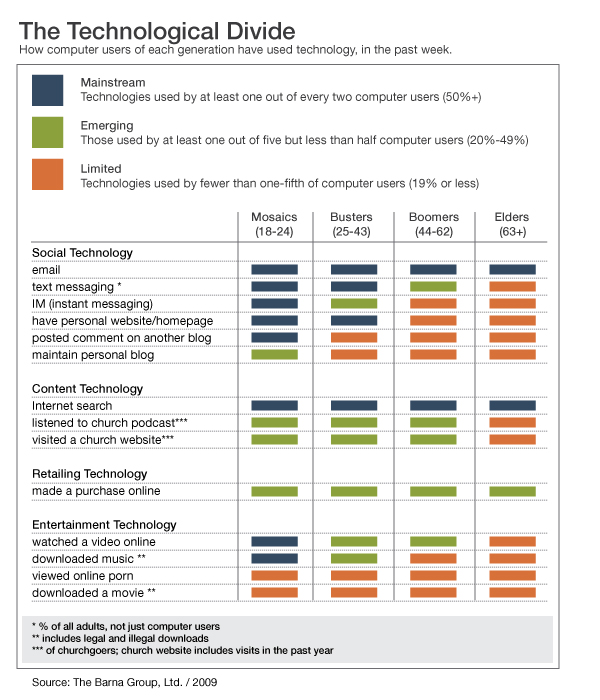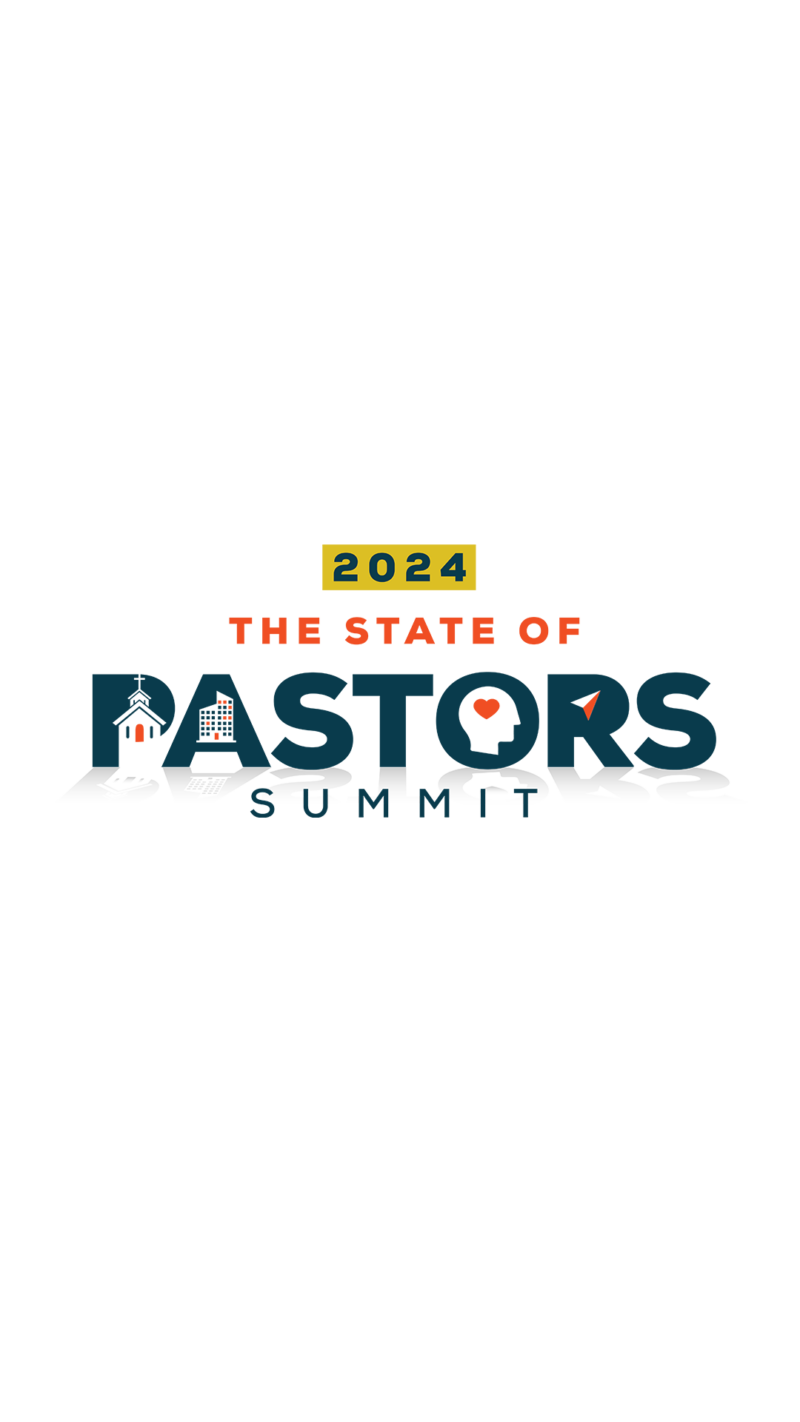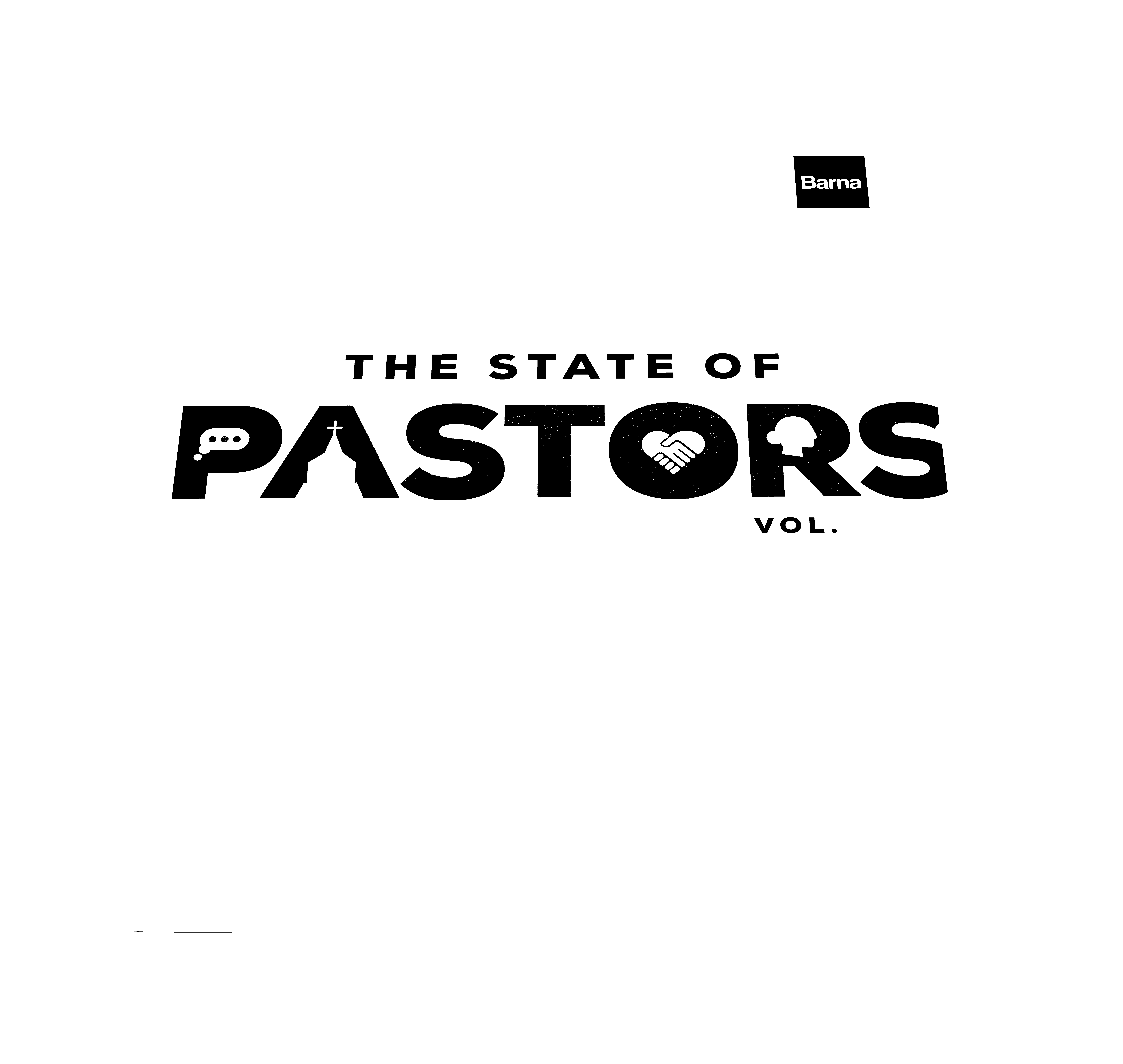New Research Explores How Technology Drives Generation Gap
Technology is fast becoming the latest driving force behind what is often called the “generation gap.” While Americans of every age have become quite comfortable with and dependent on technology, a new study by The Barna Group explores how technology is shaping different experiences and expectations among generations.
Barna Access Plus
Strengthen your message, train your team and grow your church with cultural insights and practical resources, all in one place.
Although all Americans – both young and old – benefit from technology, the generational divide brought on by digital tools is significant. The key findings of the research include the fact that each successive generation is adopting and using technology at a significantly greater pace than their predecessors. Yet, the study also shows the exponential reliance on digital tools among Americans under the age of 25.
Importance of Tech
Technology usage is not the only chasm between the young and old. Another gap is each of the generation’s perceptions about technology. Not surprisingly, younger adults are more likely to admit “gadget lust” than is true of older adults. For instance, among the youngest adult Americans – those ages 18 to 24, a group the Barna Group labels Mosaics – more than one-fifth (22%) said they consider owning the latest technology to be a very high priority in life, compared to only one out of every 11 adults over the age of 25 (9%).
Mosaics are the biggest technophiles. However, when taken together, America’s two youngest generations (Mosaics and Busters) are significantly more likely than the two oldest cohorts (Boomers and Elders) to say a desirable lifestyle is being at the cutting edge of technology.
Mainstream Technologies?
The Barna study categorized “mainstream” technology as those weekly activities relied upon by 50% or more of computer users. For example, the use of email and Internet search are mainstream because they are used by more than half of all computer users each week, regardless of generation.
Among Elders and Boomers, of the 14 activities assessed in the research, the only mainstream digital activities are email and search. Among Busters, four behaviors qualify as mainstream: email, search, text messaging and hosting a personal website or homepage (such as MySpace or Facebook). The Mosaic generation doubles this by reaching mainstream status on eight different technologies. These eight elements overlap the same four as Busters but also include: instant messaging, posting comments on other blogs, watching videos online and downloading music online (both legally and illegally).
Barna Access Plus
Strengthen your message, train your team and grow your church with cultural insights and practical resources, all in one place.
Emerging Technologies?
“Emerging” technologies were classified by Barna research as those used by at least 20% but not more than half of computer users. These are technologies that have gone beyond fringe activities but have failed to become a weekly digital ritual of the majority.
One example of an emerging technology is online purchasing. It is a common denominator of all four generations of computer users, but fewer than half made a purchase online in the last week (22% of Mosaics, 26% of Busters, 29% of Boomers and 24% of Elders).
Several spiritual elements were classified as emerging among the youngest three generations: listening to church podcasts and visiting their church website (measured for past year, not the past week). For their part, Elders have yet to move beyond limited digital access to spiritual content.
Other emerging activities among Boomers were texting and watching videos online. Among Busters, emerging uses of digital tools included instant messaging, watching videos and downloading music. Mosaics added to their considerable technological footprint by qualifying as budding bloggers. While millions of older adults are active bloggers, realize that just 11% of Busters and 5% of Boomers say they maintain a personal blog.
There were only two areas of limited technological expression among Mosaics: their admittance to viewing online pornography and downloading movies.
Deciphering the Results
The survey data points to a number of conclusions, according to David Kinnaman, president of The Barna Group:
- Even though young people are sometimes called the “Net Generation,” every age segment is becoming dependent on the Internet. In fact, because Boomers and Busters represent about two-thirds of the adult population, they are far more numerous users of technology than are adults under the age of 25. For instance, the majority of online purchases are made by those between the age of 30 and 55. And many of the bloggers, music downloaders and users of social networking websites are from the Boomer and Buster cohorts.
- Still, despite the preponderance of middle-age technology users, the nation’s youngest adults (Mosaics) are light-years ahead in their personal integration of these technologies, even blazing beyond the comfort of Busters. While Busters differ dramatically from their predecessors, Mosaics are even further down the path of integrating technologies into their lifestyles. On effect of this is that younger adults do not think of themselves as consumers of content; for better and for worse, they consider themselves to be content creators.
- All Americans are increasingly dependent on new digital technologies to acquire entertainment, products, content, information and stimulation. However, older adults tend to use technology for information and convenience. Younger adults rely on technology to facilitate their search for meaning and connection. These technologies have begun to rewire the ways in which people – especially the young – meet, express themselves, use content and stay connected.
- For church leaders, it is notable that a minority of churchgoing Mosaics and Busters are accessing their congregation’s podcasts and website. While technology keeps progressing and penetrating every aspect of life, churches have to work hard to keep pace with the way people access and use content, while also instructing churchgoers on the potency of electronic tools and techniques.
- Since technology is pervasive, many of the age-old questions about human development and human flourishing are taking on new dimension. How does technology help or hinder communication, or for that matter, relationships between the generations? Are social skills better or worse? Are reading and writing skills improving or not? And what does adequate preparation for tomorrow’s workforce look like? Educators, parents, youthworkers and other leaders must continually fine-tune their responses to these issues

Barna Access Plus
Strengthen your message, train your team and grow your church with cultural insights and practical resources, all in one place.
About the Research
This report is based upon telephone interviews conducted by The Barna Group in three nationwide surveys. These surveys were conducted in July-August 2007, December 2007 and May 2008. Each of these surveys involved interviews with 1000 adults. The maximum margin of sampling error associated with the aggregate sample for each of those surveys is ±3.2 percentage points at the 95% confidence level. Statistical weighting was used to calibrate the sample to known population percentages in relation to demographic variables.
About Barna
Since 1984, Barna Group has conducted more than two million interviews over the course of thousands of studies and has become a go-to source for insights about faith, culture, leadership, vocation and generations. Barna is a private, non-partisan, for-profit organization.
Get Barna in your inbox
Subscribe to Barna’s free newsletters for the latest data and insights to navigate today’s most complex issues.




